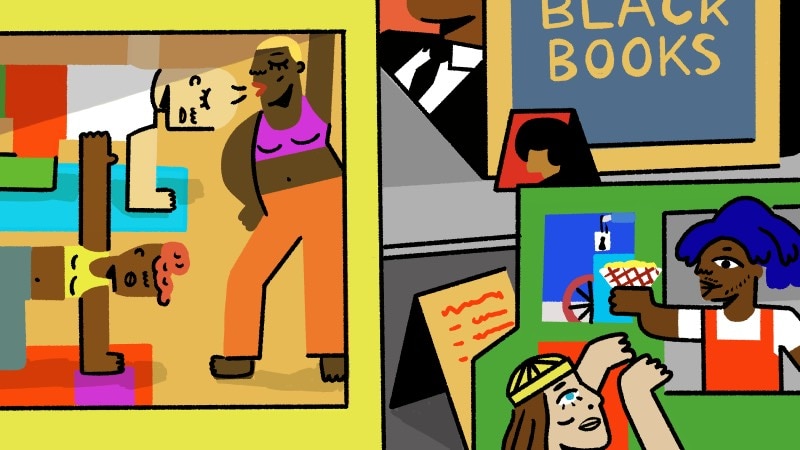As a small business owner, it’s crucial to safeguard your work and make sure that wherever your products or your business might go, your name is on it. But how do you make sure you’ll always get the credit for your work? And how do you protect your amazing entrepreneurial ideas? From safeguarding your business’s name and logo to patenting new inventions, ideas, and products — being a small business owner is a lesson in self-promotion and protection. Read on for a simple guide to all of the key terms, concepts, and best practices you need to know.

How to protect your work as a small business owner and get the credit you deserve
Basic terms and concepts
Intellectual property: Intellectual property (commonly referred to as IP) is anything you’ve created with your mind, like an invention, a work of art, or a brand name. Patents, trademarks, and copyright are all examples of intellectual property protections.
Patent: A patent prevents individuals and companies from copying or distributing an invention or discovery without permission. Patents generally last for 20 years.
Trademark: Trademarks apply specifically to the language and designs you use to identify and market your product, like a brand name or a logo. Unlike copyrights and patents, trademarks never expire.
Copyright: Think of copyright as a patent for written and visual works, like novels, poems, art, and architecture. These protections begin from the moment you create your work, whether or not you’ve gotten around to publishing it. A copyright generally lasts for the life of the creator plus another 70 years.
Public domain: Works that are either ineligible for copyright protection or, more often, whose copyright has expired fall within the public domain — which means that the author does not need to grant permission for their use or distribution.
Copyright infringement: Copyright infringement could apply to any instance in which a person or company uses, copies, or distributes a work without permission from the copyright holder. Fair use doctrine protects certain, limited forms of reference, but in general, it is best to avoid borrowing from a copyrighted work without permission.
Plagiarism: To plagiarize means to copy or otherwise distribute someone else’s work or ideas (copyrighted or not) without proper attribution. This can apply to an entire work or even just a few sentences.
Proper attribution: In terms of copyright law, attribution means acknowledging the creator or artist behind the work you are referencing. Whether you’re citing an entire work or just a portion of it, you’ll want to mention the author prominently and by name.
Permission: In order to use or substantially reference a copyrighted work, you must secure permission from the copyright owner. Once you’ve determined who owns the copyright, track down their contact information via a public records search, social media, or professional organizations. Finally, reach out to the copyright owner with a note describing which work you wish to reference and how you plan to use it. If they say “yes,” you’re good to go.
How to protect your small business branding
Once you’ve settled on a name and logo for your company, it’s time to think about how you want to protect it. You’ll mostly be thinking about trademarks for assets like your company name, your logo, and any taglines or slogans you might want to use.
The more unique your branding is, the stronger your trademark will be. If your logo is artistically unique, you might consider registering for both a trademark and a copyright. While trademarks prevent competitors from using the same branding for similar goods and services, copyright provides broader protection from unlawful copying.
If your branding is unique and you’re committed to keeping it long-term, you’ll likely be more eager to protect it with a trademark—especially if you’ve already invested a lot into its creation and distribution. Beyond preventing others from appropriating your branding, a registered trademark would also help protect you from legal action, should another company want to make their own trademark claim.
A trademark will not necessarily prevent someone else from using or even trademarking branding that is confusingly similar to yours. It’ll largely be up to you to enforce your trademark, and the cost of that enforcement (such as monitoring the industry and/or occasionally contacting a lawyer to help draft a cease-and-desist letter to an offending entity) should factor into your final decision.
How to protect your small business’s products
In any business, it can be difficult to stop competitors large and small from copying your offerings. Purely functional items are not subject to copyright, and even creative fields like fashion are always evolving when it comes to what is and is not protected. This is why in some cases, safeguarding your branding with a trademark can be so crucial.
In creative fields, the line between inspiration and intellectual property theft can be fuzzy. When it comes to artistic works, Fair Use is usually your best gauge, and it comes down to five factors: the purpose of the use, the nature of the copyrighted work, the amount of the copyrighted work used in the new work; and the effect the new work will have on the original work’s marketability. (The U.S. Copyright Office offers a more detailed rundown here.)
If your business relies on a new invention or manufacturing method, you might want to protect it with a patent to prevent others from piggy-backing on your discovery. Patents don’t just cover material inventions; they can also protect things like manufacturing processes and ingredient compositions. The United States Patent and Trademark Office has published a helpful overview to see which kind of patent you might want to pursue and whether your innovation meets the criteria.
Regardless of your industry, your business will rely on certain trade secrets—whether that be a client roster, a secret formula, or a specific distribution method. As long as your trade secrets have economic value, are not already known or obvious, and have actually been kept secret, they qualify for legal protection.
You should only share your trade secrets on a need-to-know basis, and you might also consider asking those with access to those secrets to sign confidentiality agreements. Written documentation of your efforts to protect your trade secrets might come in handy in case you ever need to defend your rights in court.
Don’t forget to snag all of the domain names and social media handles you might want to use as swiftly as possible, and remember: Once you begin publishing information about your business online, all of your content is automatically protected from plagiarism. If you hire a freelancer to generate content, you’ll need to stipulate in their contract that the writing in question is “work for hire” and that you will retain all rights, including copyright.
If you’re feeling unsure of how to move forward, you might consult with an intellectual property lawyer to make sure you’re protecting your business proactively and effectively.
Getting credit for commissioned work
Commissioned art includes any work you are creating for a specific client, corporate or individual. Before entering into a commission agreement, ArtConnect magazine suggests that you’ll want to make sure that your contract clearly lays out not only the scope of the project, a precise timeline, and your payment terms, but also your rights.
Depending on the type of commission you are working on, you might want to retain the right to reproduce the commissioned work or even exhibit it with your client’s permission. If so, you can push for those allowances in your contract. And remember: You’ll want to define who retains the copyright once the work is sold. Outside of a work-for-hire contract, the artist typically retains the copyright under U.S. law.
How to protect your small business from IP theft
If you suspect that someone is infringing on your IP rights, your first line of action might depend on whether or not you have secured protections for those rights via a patent, copyright, or trademark. In either case, you will likely want to consult with a lawyer to ensure the best possible outcome. If the misappropriated materials are not registered with a copyright, patent, or trademark, pursuing legal action could be more difficult. Be sure to collect all proof of infringement to support your claim later on.
The first step in any case of IP infringement is often a firm note or, more severely, a cease and desist letter, the latter of which you’d ideally draft with the assistance of an attorney. A cease-and-desist letter should include a description of the stolen work and specify the type of infringement you are grieving such as copyright, patent, or trademark. You’ll also need to state what action you want the recipient to take and include a deadline.
If the infringement in question takes place online, you also have the option to send a take-down notice. To prevent other people and companies from stealing your social media content, consider using watermarks or including your brand name and logo on any images shared. When dealing with internet-based IP theft, it’s important to consider both the scale of the offense and how whatever remedy you might pursue would affect your brand, should your efforts become public.
What does AI mean for small business IP?
The legal landscape surrounding AI and authorship is still evolving. There isn’t much precedent to establish who owns an AI-generated work: Is it whoever commissioned a given work from an AI platform, or is it the person who wrote the algorithm? Or maybe the work actually belongs to the people whose work was used to train the program, with or without their consent.
Because the world of AI is still not firmly established, you’ll want to tread cautiously before incorporating it into your business plan. Be sure to avoid any generative AI product that might be reproducing or otherwise replicating someone else’s work.
At the same time, the same traits that help AI commit mass IP theft can also make it a powerful tool for detecting IP theft. Monitoring an entire industry for copycats might be a full-time human job, but now, AI could help do the same thing with far fewer resources. AI programs can scour the web for images and language that violates copyright much faster than a human can.
If you choose to use AI as a safeguard for your IP, make sure that you work it into your existing systems little by little, and with careful training for both the humans and the AI involved. Monitor the results over time to determine whether or not it’s paying off.
The bottom line
As crucial as it can be for any small business to create unique and memorable products, it’s just as important to make sure that you’re protecting your creations and ideas. Whether that means choosing to register for a trademark, copyright, or patent, or to push back on a commission contract that unfairly impinges your rights as an artist, it will be up to you to ensure that your visionary ideas remain yours and yours alone in the future. With the right IP strategy, you can feel confident that as your creations become more well known, you and your company will still be along for the ride.












